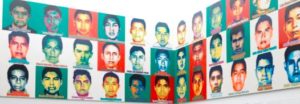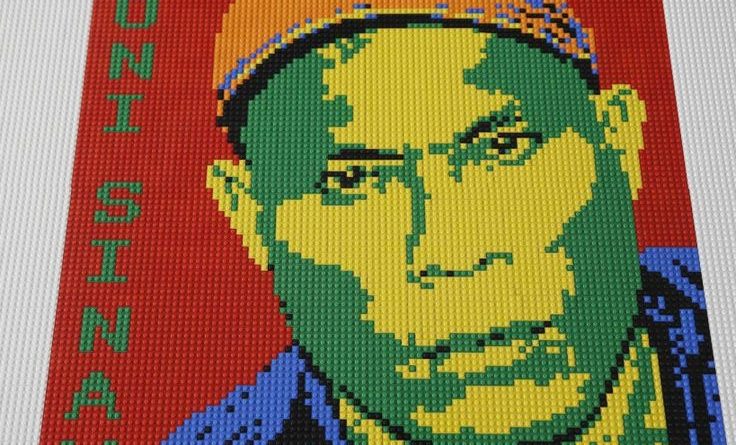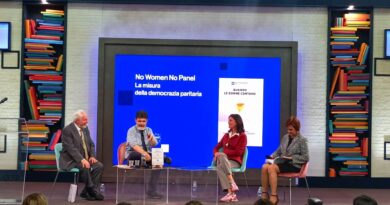Ai Did It Again: Talking Legos To Convey His Democratic Message
Ai Weiwei’s genius is once again at work to denounce the disappearance of the 43 Messican studens involved in the Ayotzinapa Massacre. This time he used Lego bricks to convey his “democratic” message.
In a previous piece realized for this magazine, I underlined how Ai Weiwei’s activism represents what literally may be called art diplomacy.
Through his artworks, in fact, the Chinese dissident communicates the importance of being committed to contemporary politics and governments.
After the provocative work made by the Gilded Cage installation, Ai Weiwei, the Chinese artist and dissident, reappears on the international scene with a new provocation aimed at raising public awareness about the disappearance of some Mexican students in 2014.
Ai Weiwei, who was detained by the Chinese government in 2011 and currently lives in Berlin, supervised the creation of the oversized Lego portraits by students from Mexico’s National Autonomous University (UNAM).
As he declared in Mexico City:
Forget about being an artist, I am a human being, just like you, and if you hear someone being hurt, you hear that your neighbors’ boy can’t ever come back, and four years pass and the government cannot come to conclusions, what kind of government is that? What kind of society we are living in?”
This time Ai decided to reproduce the faces of the 43 disappeared Mexican boys using almost a million of the famous Lego bricks.
Paired with Ai’s earlier Wang Family Ancestral Hall installation, the artwork Reestablecer Memorias – Reestablishing Memories was presented on April 13 in Mexico City, and it collects the students’ multicolored portraits in a surprising pop art style.
Moreover, Ai’s artwork goes with a chronology that tells the drama of the disappearance of those boys, all students coming from the Normal School of Ayotzinapa, Iguala, Mexico.

The chronology begins on September 26, 2014, the night that the students, who were going to a demonstration in the capital, were attacked by the police of the city of Iguala.
Then it continues with January 27, 2015, the day that the Attorney General presented a version of the facts that suggested the students had ended up in the hands of drug traffickers who had killed them and then cremated in a landfill.
Finally, it comes September 6, 2015, when a team of independent international experts, who had studied the crime scene, dismantled the official version.
These experts, sent by the Inter-American Commission on Human Rights, encouraged the Mexican authorities to resume investigations, but the government decided that the case was clarified and the investigation was closed.
The 61-year-old dissident artist explained he loves Lego because it is a democratic means of communication where crime poisons our society – he told reporters at a news conference on Thursday, April the 12th:
Everybody can use it, everybody recognizes it, and you can reconstruct it. It is such an efficient way, and I just love the pixel feeling. Why do we have to do it? Because every crime creates a vacuum and it poisons society.”
Famous for his activism against the Chinese government’s repression of free expression, Ai Weiwei claimed his Lego project was somewhat inspired by the Chinese government’s rejection of its misdeed following a massive 2008 earthquake in Sichuan, in which thousands of students died in government-built schools.

Explaining how his own investigation after the disaster was hindered, he declared:
It reminded me of the Mexicans who lost their children.”
But what happened exactly on September 26, 2014, in Iguala, Mexico?
The Ayotzinapa Massacre took place on September 26, 2014 in Iguala, Mexico, where some students of the Normal Rural Raúl Isidro Burgos School of Ayotzinapa were victims of the massacre.
According to some reconstructions, the students were travelling to Mexico City on three buses seized to carry out a fundraising initiative. During the trip they were intercepted by the local police who brutally attacked them, killing 6 students, 25 were seriously injured and 43 kidnapped.
The details of the massacre are still unclear but, after various inquiries carried out by the General Prosecutor’s Office, the investigation found that the Ayotzinapa students were abducted by corrupt police who handed them over to a local drug gang, the Guerreros Unidos.
The gang then killed them for reasons that remain still unclear and burnt their bodies in a trash dump, discarding the ashes into a nearby river.
Furthermore, the account was tainted by allegations of torture and the possible involvement of soldiers.
Mayor of Iguala Jose Luis Abarca with his wife Maria de los Angeles Pineda Villa were accused and arrested on November 4, 2014 after about a month of absconding.
Hitherto, the remains of just one student have been identified.
Like any self-respecting history of dissidence, Ai Weiwei has had to deal with criticism from the company that produces the famous Lego bricks.
In fact, last year the Chinese dissident accused Lego of refusing to sell him the famous bricks: the Danish company stated that its policy had nothing to do with political issues, even if the statement was later re-treated in the face of public resentment.
Beyond this spare contentious, Reestablishing Memories will be on display at the University Museum of Contemporary Art (MUAC) in Mexico City, Mexico, through October 6, 2019.
__________________________________________________________________________________________________________________
Video: Ai Weiwei. Restablecer memorias from the official YouTube Channel of Museo Universitario Arte Contemporáneo




